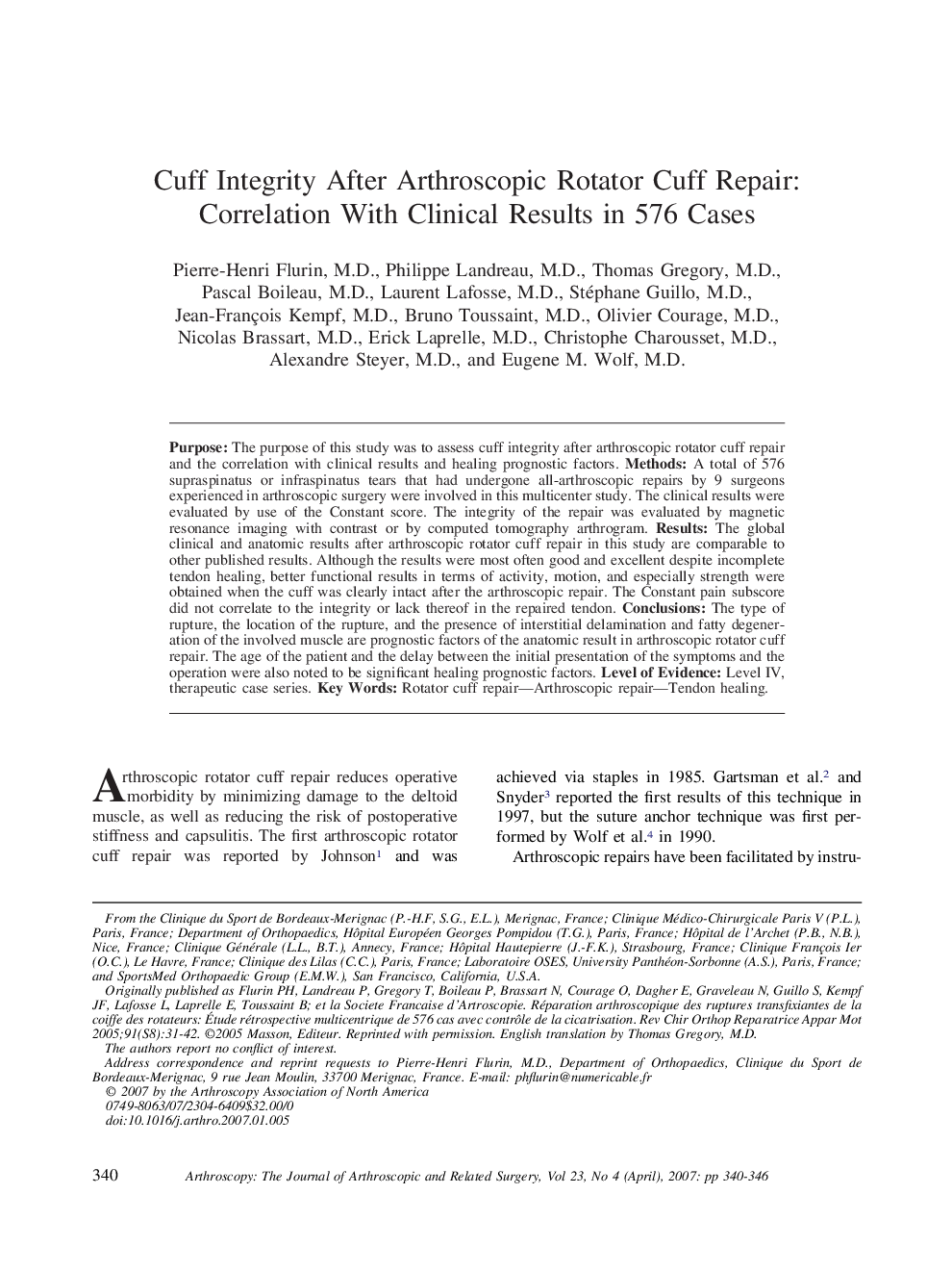| Article ID | Journal | Published Year | Pages | File Type |
|---|---|---|---|---|
| 4047572 | Arthroscopy: The Journal of Arthroscopic & Related Surgery | 2007 | 7 Pages |
Purpose: The purpose of this study was to assess cuff integrity after arthroscopic rotator cuff repair and the correlation with clinical results and healing prognostic factors. Methods: A total of 576 supraspinatus or infraspinatus tears that had undergone all-arthroscopic repairs by 9 surgeons experienced in arthroscopic surgery were involved in this multicenter study. The clinical results were evaluated by use of the Constant score. The integrity of the repair was evaluated by magnetic resonance imaging with contrast or by computed tomography arthrogram. Results: The global clinical and anatomic results after arthroscopic rotator cuff repair in this study are comparable to other published results. Although the results were most often good and excellent despite incomplete tendon healing, better functional results in terms of activity, motion, and especially strength were obtained when the cuff was clearly intact after the arthroscopic repair. The Constant pain subscore did not correlate to the integrity or lack thereof in the repaired tendon. Conclusions: The type of rupture, the location of the rupture, and the presence of interstitial delamination and fatty degeneration of the involved muscle are prognostic factors of the anatomic result in arthroscopic rotator cuff repair. The age of the patient and the delay between the initial presentation of the symptoms and the operation were also noted to be significant healing prognostic factors. Level of Evidence: Level IV, therapeutic case series.
